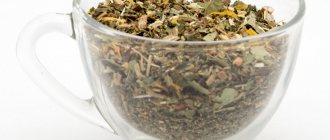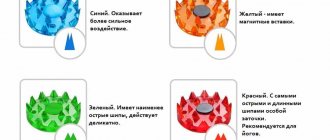What are the benefits of walking up the stairs?
The staircase is a simulator that is accessible to everyone; you don’t have to pay to use it, it’s always under your feet and all you need to do is desire. As a result of methodical training, it is possible to:
- Effectively lose excess weight without exhausting diets, since climbing stairs and subsequent descent burns more calories than, for example, running;
- Strengthen the cardiovascular system, literally avoid stroke and heart attack;
- Improve health and increase life expectancy;
- Increase the vital capacity of the lungs and cope with diseases of the respiratory system;
- Correct your figure, including problem areas (buttocks, thighs);
- Strengthen the muscular frame of the back and abdomen.
Benefits of running on stairs
Since running up the stairs is much more difficult than just walking, the muscles work with double force. The thighs, buttocks and abs are trained, fat is actively burned, the cardiovascular system is strengthened, and the body becomes more resilient. In addition, joints and ligaments are developed, bones are strengthened.
Therefore, if your goal is to lose weight, then you need to run, and not walk up the stairs. You can choose any pace, and eventually try interval running on stairs - increasing your speed at regular intervals.
Running up the stairs can be especially convenient for young mothers who do not have the time or opportunity to get in shape at the gym.
How to organize training
There are no uniform rules for walking up stairs. Each person must select the load individually, taking into account age, health status and the goal being pursued.
There are two main postulates that must be adhered to, guided, in the future, by the results achieved.
- Start small: the duration of the first workouts does not exceed 5 minutes, this means climbing the stairs to a height of 2-3 floors and descending. Gradually the load increases, reaching 20 minutes or more.
- Running or walking – the one who exercises chooses. Training should not cause discomfort. Shortness of breath indicates that the pace taken initially was too high. It is necessary to moderate the rhythm and reduce the load to a comfortable level. It is very important to monitor your breathing.
How many calories are burned when walking up the stairs?
To lose weight, you need to choose running or climbing stairs at an accelerated pace. The duration of the workout is at least half an hour, you can practice weighting (if we are not talking about a beginner) or walking over a step.
With a starting weight of 60 kg:
- 75 kcal are burned in 5 minutes;
- In 10 minutes – 150 kcal;
- In 20 minutes – 300 kcal;
- In 30 minutes – 450 kcal;
- In 45 minutes – 675 kcal;
- In 60 minutes – 900 kcal.
Walking quickly or running up and down uses different muscle groups.
See also on the blog: Why walking on the buttocks is considered the most effective health practice
What muscles work?
- calf muscles;
- knee straighteners;
- hamstrings;
- gluteal muscles.
What is more useful: going up or down the stairs?
Going down stairs is harder work on the muscles than going up. When working with weights, after 2-3 approaches the thigh muscles cannot be brought under control - this is a sure sign that the training is going correctly, but it’s time to end it.
During descent, muscle nuclei are activated, collagen fibers are formed, hips and buttocks acquire the desired shape and relief.
Is it good to walk up the stairs?
A brisk climb to the fifth floor without an elevator is about minus 10 kcal, and a simple cardio workout, similar to a stepper or even an exercise bike. What should you do if your knees and joints hurt when walking and climbing stairs, and you have been diagnosed with gonarthrosis? It turns out that in this case there is no reason for despondency.
Climbing stairs is a very simple but effective workout that has a healing effect on the knee joint for arthrosis and injuries (meniscus, ligaments).
The fact is that when going up the stairs (not going down, but going up!), we actively engage the large muscles of the thigh and lower leg. Namely, these muscles serve as a kind of “pumps”, pumps that pump a huge amount of blood, providing nutrition to the knee joint and uninterrupted metabolism.
Thus, by loading the leg muscles, we promote intensive hydration of the knee - all the necessary nutrients are delivered by the blood that circulates through the vessels, and, as a result, natural healing of the articular cartilage, ligaments and tendons occurs. So even if you experience pain when walking , don't be afraid to walk up stairs or uphill. Of course, such a load also serves as an excellent prevention of arthrosis, which is caused primarily by malnutrition of the cartilage, its drying out and cracking.
Finally, like any aerobic exercise, climbing stairs reduces the level of bad cholesterol in the blood, cleanses and strengthens blood vessels.
But it’s better to go down the stairs by elevator. Despite the apparent relative “ease” of this action compared to lifting, it can even turn out to be dangerous for the knee joint, since during descent, uncontrolled muscle contraction occurs and the joint loses stability.
We draw a conclusion. Climbing the stairs every day is perhaps the simplest and least burdensome type of activity and way to keep fit.
Attention! If you have knee pain or any discomfort, it is advisable to see a specialist and undergo an examination. The sooner you start treating and restoring the health of the joint, the better and more effective the result will be.
Make an appointment for a consultation and diagnosis with an orthopedic doctor at the Kazan Kinesitherapy Center: 8 (843) 570-55-25.
Read more about the treatment of arthrosis, arthritis and injuries of the knee joint in our center.
You can ask questions and leave comments in our VKontakte group.
Follow us on Instagram:
Don't miss out on the fun! Subscribe to our news:
Subscribe to news from the Kazan Kinesitherapy Center
Center promotions, therapeutic exercises and useful tips from our specialists on how to independently maintain the health of your joints and spine without medications
Similar articles:
Joint pain. Winter exacerbation
Damage to the meniscus and ligaments of the knee. Is it possible to do without surgery?
PRP therapy for joint pain and inflammation
What are the benefits of slow walking?
Slow walking can't do what running up the stairs does: burning calories. She has a different goal - strengthening the muscular frame of the legs, back and abdomen.
Slow ascent and descent will not harm your joints, the main thing is not to allow yourself to speed up the pace. During exercise, the heart rate should not exceed 150 beats per minute. Otherwise, the load on the body is excessive and the pace must be reduced.
What benefits does walking up stairs have for leg diseases?
How to treat flat feet by walking up stairs
Reviews of people who have cured flat feet with the help of therapeutic exercises indicate the benefits of walking on stairs.
To prevent and treat flat feet, you need to alternately stand on the step with one foot (the front part, so that the heel sag) and make 3-5 springing movements.
See also on the blog: Taoist practice of walking on your knees: how to walk correctly and how long
Walking up stairs during pregnancy
For women during pregnancy, if there is no threat of miscarriage, moderate physical activity is not prohibited. If a woman is in good physical shape, then she is able to determine her own norm of activities and wait for a child for 9 months.
If you have doubts about the advisability of exercise, it is better to consult a doctor.
Adviсe
- Before you start training, you need to warm up and warm up your muscles to avoid injury and damage.
- Shoes for training should be durable and comfortable, with practical non-slip soles.
- Outdoor activities will bring double benefits.
- It is not recommended to rest between ascent and descent.
- For pregnant women and older people, the recommendation is to hold on to the railing to avoid tripping and falling.
- After the first serious workout, your legs ache for a couple of days; this is a normal reaction of the body.
- For men and those who want to lose weight (regardless of gender), walking with weights is recommended.
If you experience knee pain while walking that does not go away even after you stop exercising, you should consult a doctor and postpone training. The situation is similar with a crunch in the knees: a physiological crunch is not dangerous, but you need to make sure that this is not a pathology
Correct technique
It is important to learn how to walk correctly to lose weight: Nordic walking can work wonders if you approach the task correctly, so it is recommended to start your first steps under the guidance of a competent instructor.
Basic rules for those who want to lose a few kilograms:
- Duration of training: from 40 minutes at average heart rate.
- The arms and legs move in antiphase: the right arm is the left leg, and vice versa.
- Amplitude movements with the active inclusion of arms and legs in the work.
- When walking, you should feel tension in the muscles of your legs, arms, abs and back.
- Stay hydrated: drink during and after training.
For training to be effective, you should exercise 3-4 times a week. The training program prescribes the duration of classes and speed. If you are training in the morning, it is recommended to do it on an empty stomach. A warm-up and cool-down are required, and emphasis is placed on proper breathing.
Contraindications
- leg and joint injuries;
- severe scoliosis;
- severe varicose veins;
- arterial hypertension;
- heart failure and other pathologies.
Along with walking up the stairs, it is recommended to review your diet, focusing on protein and fiber, give up bad habits, and observe a work-rest schedule.
Who is contraindicated for running on stairs?
Such a simple-looking workout should be approached with great attention and take into account that it is suitable for everyone. If you suffer from varicose veins, hypertension, scoliosis or diseases of the cardiovascular system, then such activities are contraindicated for you.
Those who have suffered injuries to the knees, ankles and hip joints, or have a high body mass index (above 30) should not run stairs. Even if you are confident in your health, consulting a doctor will not hurt.
Of course, if your entrance is completely smoky or full of odors from the garbage disposal, then you should look for other places for training - maybe in the entrance of a neighboring house or on the street.











